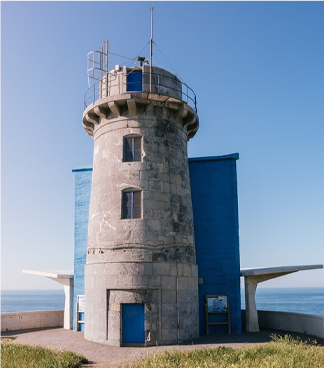Oct . 17, 2024 18:27 Back to list
submersible pump wire 12/2
Understanding Submersible Pump Wire 12/2 A Comprehensive Guide
Submersible pumps are essential devices used in various applications, from draining pools and flooded basements to operating fountains and irrigation systems. These pumps are designed to be submerged in water and require a specific kind of wiring to ensure safe and reliable operation. One commonly used type of wiring for submersible pumps is the 12/2 wire. In this article, we will explore what 12/2 wire is, its applications, installation considerations, and safety measures.
What is 12/2 Wire?
The term 12/2 refers to the wire gauge and the number of conductors it contains. The 12 indicates the wire gauge, which is 12 AWG (American Wire Gauge). The lower the number, the thicker the wire. Thicker wires can carry more current without overheating, making them suitable for high-power applications.
The 2 indicates that the wire consists of two conductors. These conductors typically include one hot (live) wire and one neutral wire. In some cases, especially for submersible pump applications, a ground wire may also be included. Therefore, when you refer to 12/2 wire, it often means that it might include three strands one hot, one neutral, and one ground.
Applications of 12/2 Wire in Submersible Pumps
Submersible pumps require durable and flexible wiring to withstand the harsh conditions of underwater operations. The 12/2 wire is often used in residential and agricultural applications for
1. Sump Pumps These pumps are used to remove water that has accumulated in a sump pit, typically found in homes. The 12/2 wire is perfect for supplying the necessary power to these pumps.
2. Well Pumps Many residential wells utilize submersible pumps that require significant power to draw water from deep underground. The 12/2 wire ensures that sufficient electricity reaches the pump, allowing it to function effectively.
3. Irrigation Systems In agriculture, submersible pumps are often used in irrigation setups. Using 12/2 wire helps to ensure that the pumps work efficiently, contributing to effective water management.
4. Fountains and Waterfalls Decorative features like fountains and waterfalls often utilize submersible pumps to circulate water. The 12/2 wire is ideal for powering these systems, given its durability and flexibility.
Installation Considerations
submersible pump wire 12/2

Installing 12/2 wire for a submersible pump requires careful planning and adherence to local codes. Here are some key considerations
- Depth and Distance The depth at which the pump will be submerged and the distance from the power source to the pump will determine the type of wire you need. While 12/2 wire is common, longer distances might require thicker gauges to prevent voltage drop.
- Environmental Protection Since the wire will be submerged, it should be rated for wet conditions. Look for wire that has insulation materials designed to resist moisture and corrosion, such as THHN or UF cable.
- Circuit Breaker Ensure that the circuit breaker or fuse box can handle the current required by the submersible pump. A 12/2 wire typically supports circuits of up to 20 amps.
Safety Measures
Safety is paramount when working with electrical installations, especially with devices submerged in water. Here are some important safety measures
1. Grounding Always ensure that the pump is properly grounded to prevent electric shock. Use a three-pronged plug and ensure that the ground wire is correctly connected.
2. GFCI Protection Ground Fault Circuit Interrupter (GFCI) outlets are essential when using submersible pumps. They cut off power if they detect an imbalance in electrical flow, which can prevent fatal accidents.
3. Regular Maintenance Periodically check the wiring and the pump for signs of wear, corrosion, or damage. Regular maintenance can prevent hazardous situations.
Conclusion
Submersible pump wire 12/2 is an essential component for ensuring that submersible pumps operate effectively and safely. Whether used for residential applications or agricultural needs, understanding the specifications, installation, and safety measures associated with this wire can lead to more reliable performance. Always consult with a professional electrician if you're uncertain about installation requirements to ensure compliance with local electrical codes and safety standards.
-
Submersible Water Pump: The Efficient 'Power Pioneer' of the Underwater World
NewsJul.01,2025
-
Submersible Pond Pump: The Hidden Guardian of Water Landscape Ecology
NewsJul.01,2025
-
Stainless Well Pump: A Reliable and Durable Pumping Main Force
NewsJul.01,2025
-
Stainless Steel Submersible Pump: An Efficient and Versatile Tool for Underwater Operations
NewsJul.01,2025
-
Deep Well Submersible Pump: An Efficient 'Sucker' of Groundwater Sources
NewsJul.01,2025
-
Deep Water Well Pump: An Efficient 'Sucker' of Groundwater Sources
NewsJul.01,2025
-
 Submersible Water Pump: The Efficient 'Power Pioneer' of the Underwater WorldIn the field of hydraulic equipment, the Submersible Water Pump has become the core equipment for underwater operations and water resource transportation due to its unique design and excellent performance.Detail
Submersible Water Pump: The Efficient 'Power Pioneer' of the Underwater WorldIn the field of hydraulic equipment, the Submersible Water Pump has become the core equipment for underwater operations and water resource transportation due to its unique design and excellent performance.Detail -
 Submersible Pond Pump: The Hidden Guardian of Water Landscape EcologyIn courtyard landscapes, ecological ponds, and even small-scale water conservancy projects, there is a silent yet indispensable equipment - the Submersible Pond Pump.Detail
Submersible Pond Pump: The Hidden Guardian of Water Landscape EcologyIn courtyard landscapes, ecological ponds, and even small-scale water conservancy projects, there is a silent yet indispensable equipment - the Submersible Pond Pump.Detail -
 Stainless Well Pump: A Reliable and Durable Pumping Main ForceIn the field of water resource transportation, Stainless Well Pump has become the core equipment for various pumping scenarios with its excellent performance and reliable quality.Detail
Stainless Well Pump: A Reliable and Durable Pumping Main ForceIn the field of water resource transportation, Stainless Well Pump has become the core equipment for various pumping scenarios with its excellent performance and reliable quality.Detail
